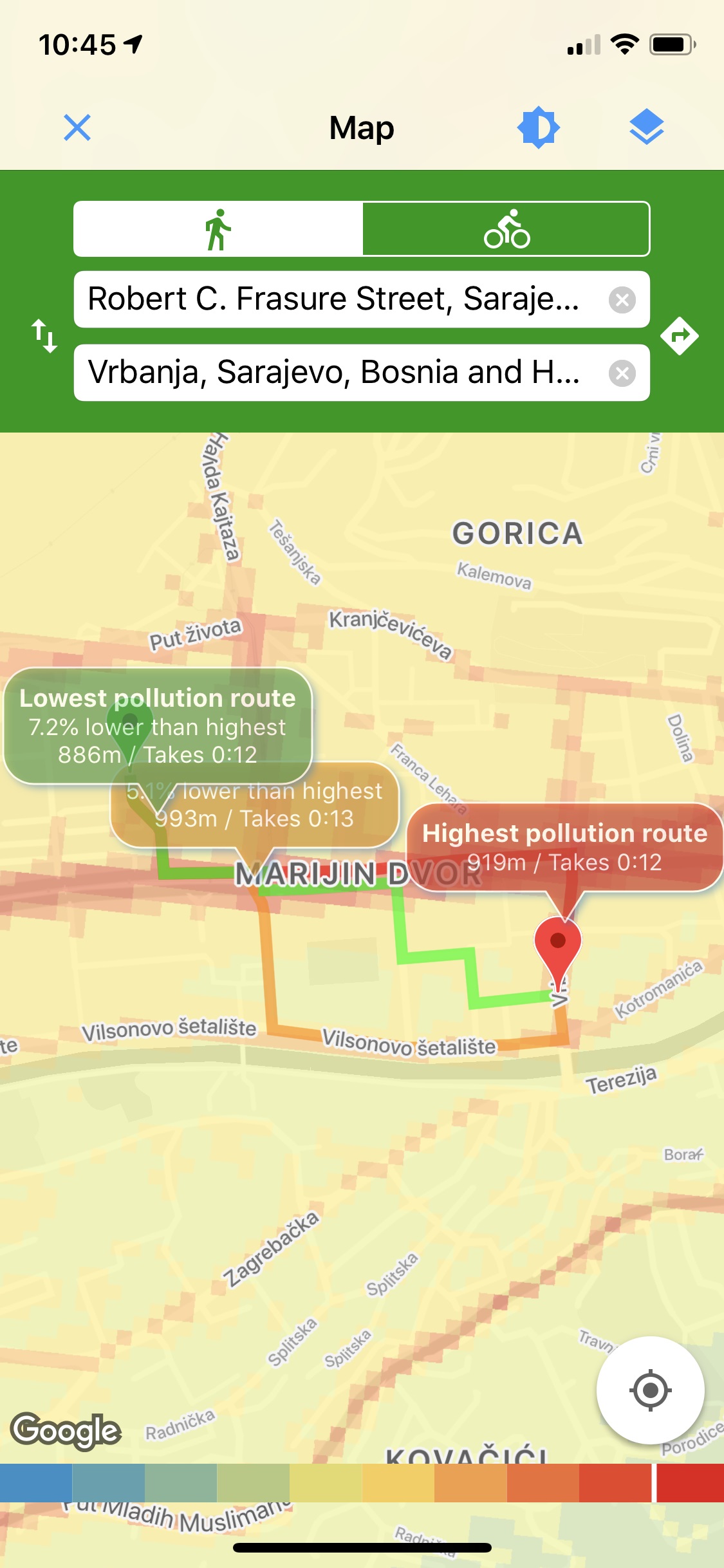

King’s College London has developed a coupled regional and local scale air pollution modelling system for health impact assessment and policy applications (CMAQ-urban). The modeling system has advanced the traditional standalone regional/local scale models with an ability to capture long-range transport pollutants such as O3 and PM10/2.5 using the Community Multiscale Air Quality Modelling system (CMAQ), as well as for locally generated pollutants at roadside locations, using the ADMS-Roads model. The system is capable of predicting hourly air pollutant concentrations every 20m across large areas and has been used to predict concentrations of NOX, NO2, O3, PM10 and PM2.5 and the model performance benchmarked against ground based measurements.
As the final component of this project, a free Sarajevan mobile phone app has been created, which takes trip locations from A to B, anywhere in the city, and provides three alternative routes, ranking them according to the exposure to air pollution on each.
| Name | Expertise | Role in the project |
|---|---|---|
| Dr Nutthida Kitwiroon | Air pollution modelling | Predicting air pollution in Sarajevo |
| Dr Andrew Grieve | Mobile apps | Develop human exposure app |
| Dr Sean Beevers | Air pollution modelling | Work package lead |

Figure 1

Figure 2
© Imperial College London, Environmental Research Group. All rights reserved 2020.